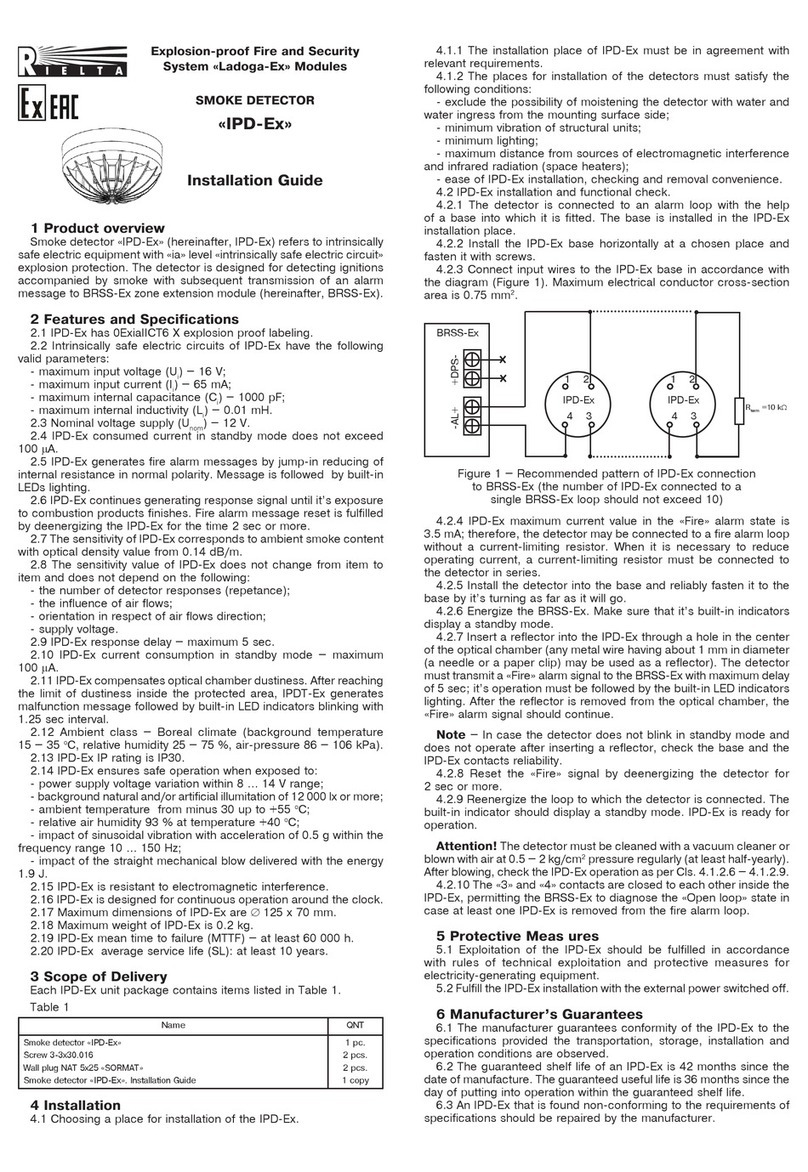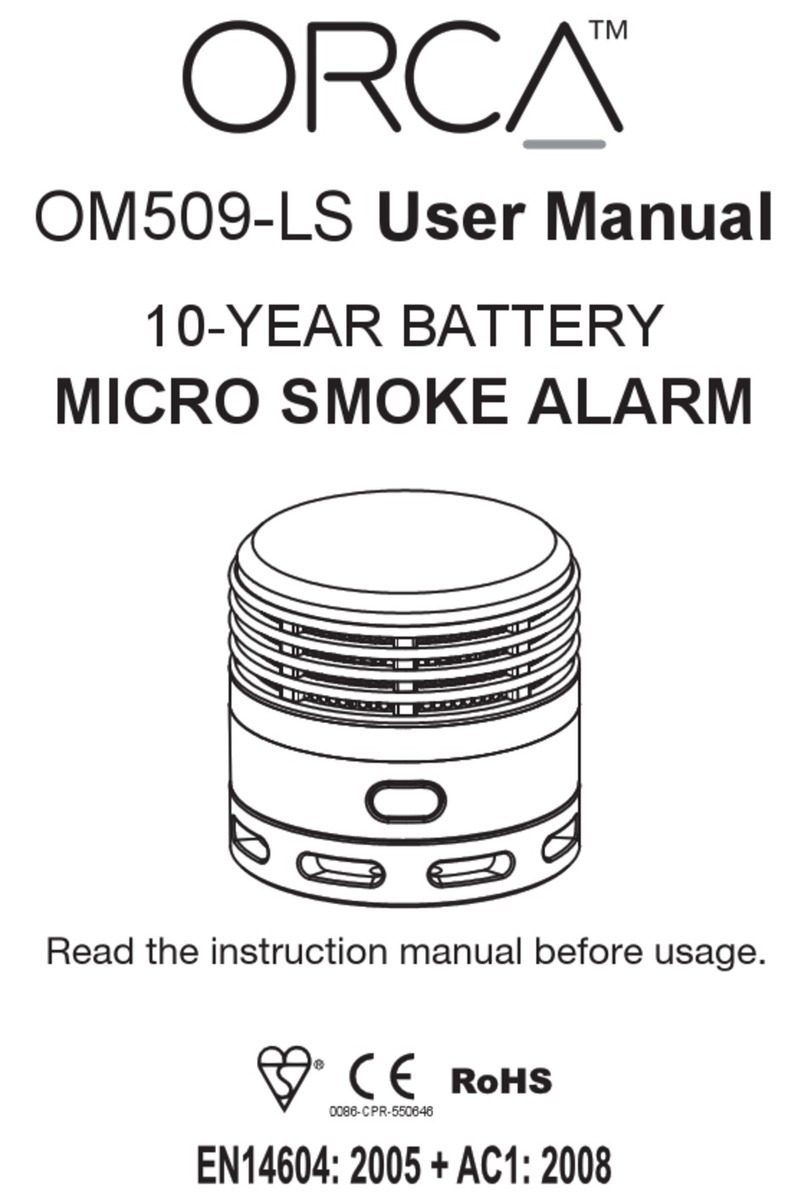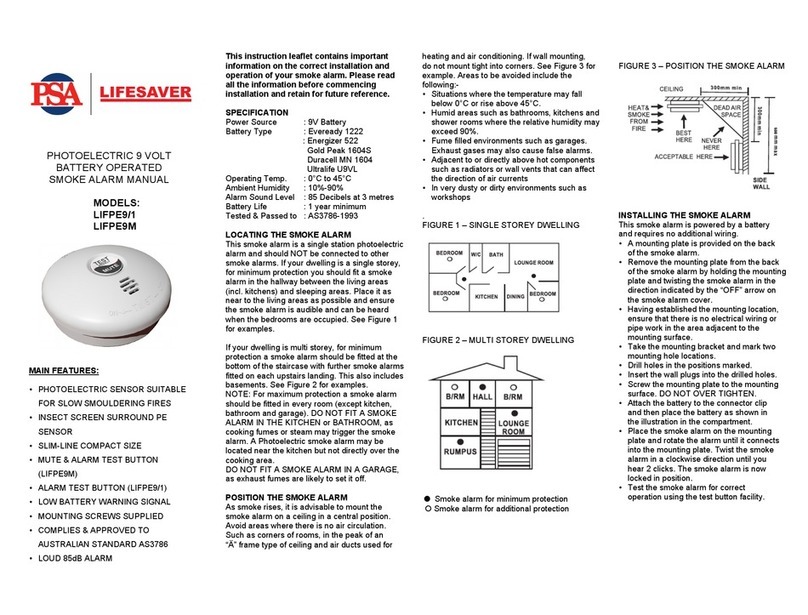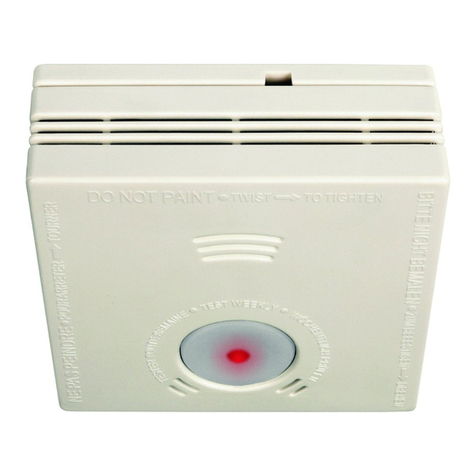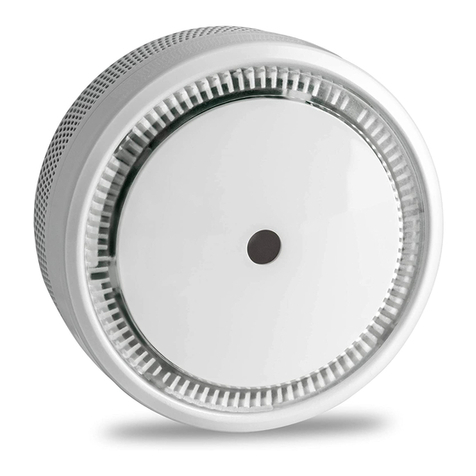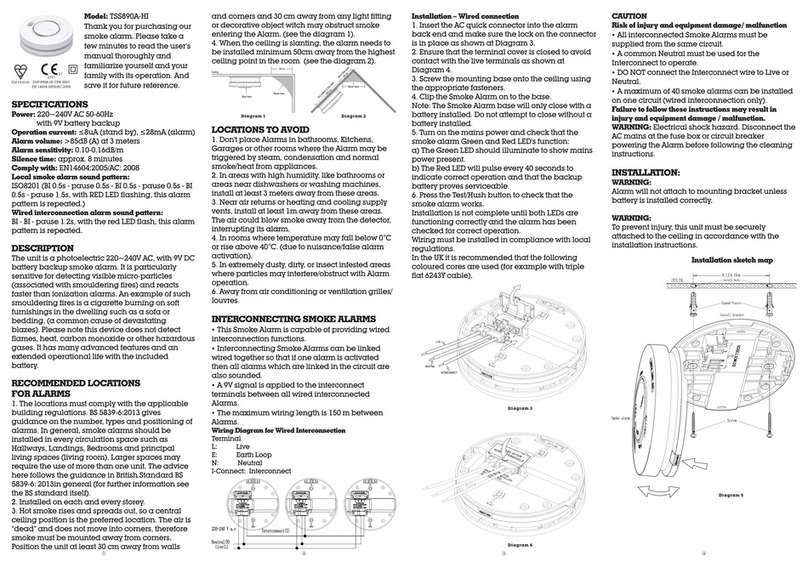Rielta Ladoga PD-RK-A User manual

WIRELESS INDEPENDENT
SMOKE DETECTOR
«Ladoga PD-RK-A»
Installation Guide
1 General Information
1.1 The wireless independent smoke Detector «Ladoga PD-RK-A» (hereinafter,
the Detector) is intended for:
- detecting ignitions accompanied by smoke;
- sound announcement about the fire accident;
- «Fire» message generating and sending within the 433.05 to 434.79 MHz
frequency range via two-way communication by the «Rielta-Сontaсt-R» exchange
protocol.
Operating principle of the Detector is based on the detection of the optical
radiation reflected from smoke particles.
1.2 The Detector is designed for operation as a component of a system,
that is operated by any control panel (hereinafter, CP) supporting the «Rielta-
Contact-R» wireless exchange protocol or in stand-alone mode without the CP.
1.3 After ignition detection, the Detector generates Fire alarm message and
transmit’s it to the CP (in case of operation with the CP), switches on light state
indication and sound announcement.
1.4 In case of operation in independent mode, Norm state restoration and
sound announcement takes place after smoke content reducing lower the
threshold.
1.5 In case of operation with a CP, Norm state restoration and sound
announcement is executed after smoke content reducing lower the threshold
and getting «RESET» command from the CP.
1.6 In case operation with a CP, the Detector provides possibility to switch
ON announcement by the relevant command from the CP, as well as to inhibit
announcement automatic switching ON when ignition is detected.
1.7 The Detector provides pulse and continues modes of sound announcement.
Mode of operation is configured by means of the CP.
1.8 The Detector provides compensation of the optical smoke chamber dust
content and controls it’s operability.
1.9 Radio signals exchange with the CP is fulfilled via the wireless two-way
communication in 433.05 – 434.79 MHz frequency range. The Detector provides
automatical switch to a backup operating frequency in case of radio-frequency
interference at the main one.
1.10 Transmitter power does not exceed 10 mW.
1.11 The Detector comprises functionality testing module with speed of
response not more than 5 s.
1.12 The Detector status is displayed by two built-in LED indicators.
1.13 The Detector controls it’s removal from the base.
1.14 The Detector is powered from two galvanic power supply batteries CR123A
type with nominal voltage 3 V: the main and backup ones.
1.15 Ignition is detected if at least one battery is in working order.
1.16 During operation in independent mode in case of any battery failure,
short sound signal is generated once in 40 s.
1.17 The Detector generates and transmits via wireless communication channel
the following messages:
- «Norm» – normal state;
- «Fire alarm» – ignition is detected;
- «Optical smoke chamber dusting» – upon reaching the dust concentration
threshold;
- «Failure» – circuit fault or sensitivity drop;
- «Main power-supply low-battery» – if power-supply voltage drops below
2.4 V ± 0.2;
- «Backup power-supply low-battery» – if power-supply voltage drops below
2.4 V ± 0.2;
- «Tamper» – in case of the Detector removal from the base.
1.18 The following rates of radio exchange may be assigned: 10 s,
15 s, 30 s, 60 s, 2 min or 5 min by the command from the CP. Messages about
ignition and failures are transmitted immediately.
1.19 The Detector provides safe operation in a standby mode* being powered
by:
- main power-supply battery: not less than 5 years;
- backup power-supply battery: not less than 2 months.
1.20 The Detector designed to operate in closed areas continuously around
the clock.
2 Features
Table1
Parameter Value
Threshold of sensitivity 0.16 ± 0.03 dB/m
Acoustic pressure level at 1 m distance from the
Detector, not less than, not less than 85 dB
Generated sound alarm signals frequency 2 … 5 kHz
Consumption current in standby mode (without radio
exchange), not more than 20 μA
Consumption current in alarm mode and sound
announcement, not more than 100 mA
Operating temperature minus 20 °C +55 °C
Table 1, continuation
Parameter Value
Permissible humidity (at a temperature 40 °C) 93 %
IP rating IP30
Dimensions, not more than Ø 125 х 70 mm
Weight, not more 0.2 kg
Average service life 10 years
3 Scope of Delivery
Each Detector unit package contains the items listed in Table 2.
Table 2
Name QNT
Wireless independent smoke Detector «Ladoga PD-RK-A»
Screw 3-3x30.016
Wall plug NAT 5x25 SORMAT
CR123A lithium power-supply battery
Wireless independent smoke Detector «Ladoga PD-RK-A». Installation Guide
1 pc.
2 pcs.
2 pcs.
2 pcs.
1 copy
4 Design of the Detector
* under conditions of: radio sessions interval of at least 30 s,
radio-interference absence and normal climate parameters
The Detector outside view is shown in Figure 1.
The Detector comprises:
- case with optical smoke chamber (1);
- base (2);
- two LED indicators (3);
- main power supply battery (8);
- backup power supply battery (6);
- operability control button «TEST» (4);
- pin contacts «RESET» (5);
- tamper (removal from the base control) (7).
5 LED Indication
The Detector displays it’s state in accordance with Table 3.
Table 3
Detector Status Indication
Notes
«Binding» Green LED indicator blinks intermittentl
«Binding completed» Single-shot (2 s) green LED lighting
«Fire» Red LED indicator blinks intermittently at
1 Hz frequency
«Norm» Green LED blinks once per 15 s
«Dusting» Red LED blinks once per 15 s Independent
operation
«Power supply failure»
Red LED switching on once per
15 s and sound signal – once per
30 s
Operation with
the CP
No communication with
the CP
Red LED indicator blinks once per
15 s
Operation with
the CP
Communication quality
appraisal «Excellent» Three blinks of green LED Operation with
the CP
Communication quality
appraisal «Good» Two blinks of green LED Operation with
the CP
Communication quality
appraisal «Communication
established»
One blink of green LED Operation with
the CP
Communication quality
appraisal
«No communication»
Four blinks of green LED Operation with
the CP
Figure 1
1
2
3
4
5
6
7
8
TEST
BACKUP
RESET
MAIN

6 Switching ON and Setting Up
Generally operational sequence consists of the following steps:
- binding (logging) the Detector with the CP;
- choosing place of installation;
- operability testing;
- installation.
7 Binding with the CP
7.1 Prepare the CP for the new device logging in («Binding» mode) in
accordance with the CP Manual. In the Detector radio-coverage zone only one
CP prepared for binding procedure should be located.
7.2 Remove the Detector from the base rotating it counter clockwise.
7.3 Install first the backup power supply battery, and after the main one into
the holders, located on the PCB (if the battery is installed by manufacturer,
remove an isolator).
7.4 Close «RESET» contacts on the PCB by any metal object and hold it until
«Binding» indication switches on.
7.5 Fulfill binding. After a successful binding with the CP, the red LED
indicator blinks shortly.
Note – The time during which the Detector operates in the «Binding» mode
is limited to 100 s. To repeat binding procedure, repeat Cls. 7.3 – 7.5.
8 Standalone Mode
To provide the Detector operation independently without CP, act as follows:
- remove the Detector from the base rotating it counter clockwise.
- remove the isolating plates between «+» contacts and battery holders
primarily from backup, and then from main power supply batteries.
- close «RESET» pin contacts on the PCB by any metal object and hold it until
«Binding» indication switches on.
- wait for approximately 100 s till the end of binding mode without binding
with the CP.
9 Installing the Detector
When choosing the place of installation for the Detector, take into account
the fact that the Detector refers to fire Detectors with operability control and
therefore, only a single Detector may be installed in the monitored premise.
All other conditions being equal, the location chosen for the installation of the
Detector should meet the following requirements:
- prevention of water ingress from the front side and the base side;
- minimum vibrations of building structures;
- minimum illumination;
- maximum distance from sources of electromagnetic interference and infrared
radiation (heating units);
- maximum convenience of installation, checking and removal of the Detector.
Transmission quality may differ from premise to premise; therefore, it is
advisable to apprise a communication quality before the Detector is finally
installed.
10 Communication Quality Appraisal
10.1 Bring the Detector to the assumed place of installation.
10.2 Press the arm of sensing element, ensuring control of the Detector
removal from the base.
10.3 The Detector displays the quality of communication by LED indication
as per Table 4.
Table 4 Communication quality appraisal results
LED Indication Communication
Quality Appraisal Recommendations
Color Mode
Green Three blinks Excellent Install the Detector at
this place
Green Two blinks Good
Green One blink Communication established Choose another place
for installation or use a
repeater
Red Series of blinks No communication
Rev. 3 of 18.04.2018
№ Э00464
v.2
11 Operability Test
Press the operability test button and hold it during not less than 5 s, until the
Detector switches «Fire» LED indication and sound signal. Make sure that «Fire»
alarm message at correspondent zone is received.
Feed testing spray into the optical smoke chamber opening. In case of
operation with the CP in order to restart the Detector, «Arming» command by
the wirelwss two-way communication «Rielta-Contact-R» protocol from the CP
is required.
12 Installation
12.1 Choose the Detector location, where the quality of communication is
appraised «excellent» or «good» and carry out marking for it’s mounting. Use
the base for marking. (See Figure 1).
12.2 Install the base at the chosen place and fasten it by 2 screws.
12.3 Insert the Detector into the base and fix it by turning clockwise.
13 Maintenance
The operability of the Detector should be checked at least annually.
The Detector should be cleaned from dust if the Detector generates «Fault»
or «Optical Smoke Chamber Dustiness» message. For this purpose, sweep the
optical system of the Detector by air under 0.3 – 0.5 kg/cm2pressure.
Technical maintenance rate for optical smoke chamber dustiness prevention
depends on the operating conditions and statistical data. It is recommended
to provide services of all detectors logged in the fire alarm system periodically.
In case of any battery discharge, both batteries should be replaced with a
new one.
Attention! It is forbidden to remove and disassemble optical smoke chamber.
14 Storage and Transportation
14.1 The Detector in original package without power supply batteries is
resistant to:
а) transport jolting with the acceleration of 30 m/sec2with impact frequency
rate from 10 to 120 impacts/sec or 15000 impacts with the same acceleration;
b) the ambient temperature from minus 50 … +50 °С;
c) relative air humidity (95 ± 3) % at the ambient temperature +35 °С.
14.2 The Detectors in original package may be transported by any transport
facility in closed vehicles over any distances in compliance with the existing
shipping rules concerning the respective means of transport.
14.3 After transportation under the conditions different to exploitation
conditions, the Detector shall be ready to operate after a maximum of six hours.
15 Manufacturer’s Guarantees
15.1 The manufacturer guarantees conformity of the Detector to the Technical
Specifications requirements provided the transportation, storage, installation and
operation conditions are observed.
15.2 The guaranteed shelf life of the Detector is 42 months since the date
of manufacture.
15.3 The guaranteed useful life is 36 months since the day of putting into
operation within the guaranteed shelf life.
15.4 The Detectors that are found non-conforming to the Technical
Specifications requirements shall be repaired by the manufacturer, provided
the installation and operation rules have been complied with.
Note – Warranty obligations are not applied to the power supply batteries.
16 Packing Certificate
Wireless independent smoke Detector «Ladoga PD-RK-A» has been
manufactured in compliance with the active technical documentation, classified
as fit for operation and packed by «RIELTA» JSC.
Packing date _______________________________
month, year
«RIELTA» JSC, www.rielta.com
Tel./fax: +7 (812) 233-0302, 703-1360
Made in Russia
Other Rielta Smoke Alarm manuals
Popular Smoke Alarm manuals by other brands
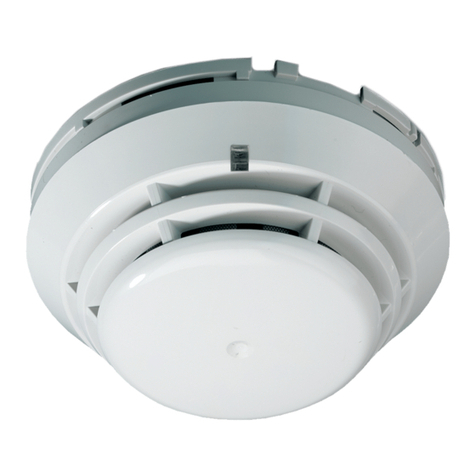
Kilsen
Kilsen KL710 Installation sheet
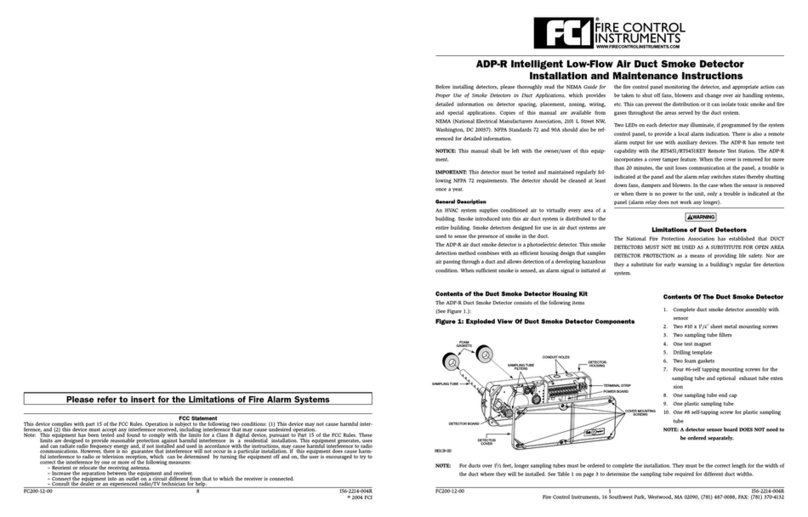
FCI
FCI ADP-R Installation and maintenance instructions
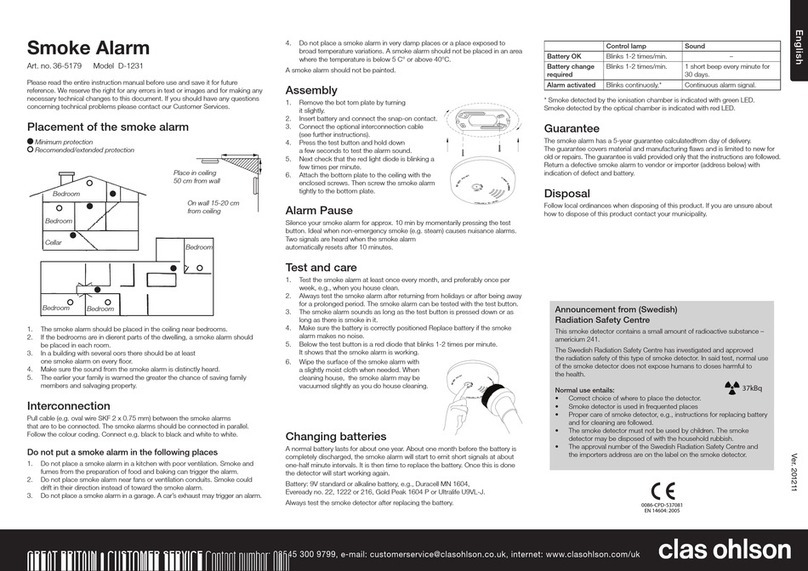
Clas Ohlson
Clas Ohlson D-1231 instruction manual

SILENT KNIGHT
SILENT KNIGHT IFP-2000 Installation and operation manual
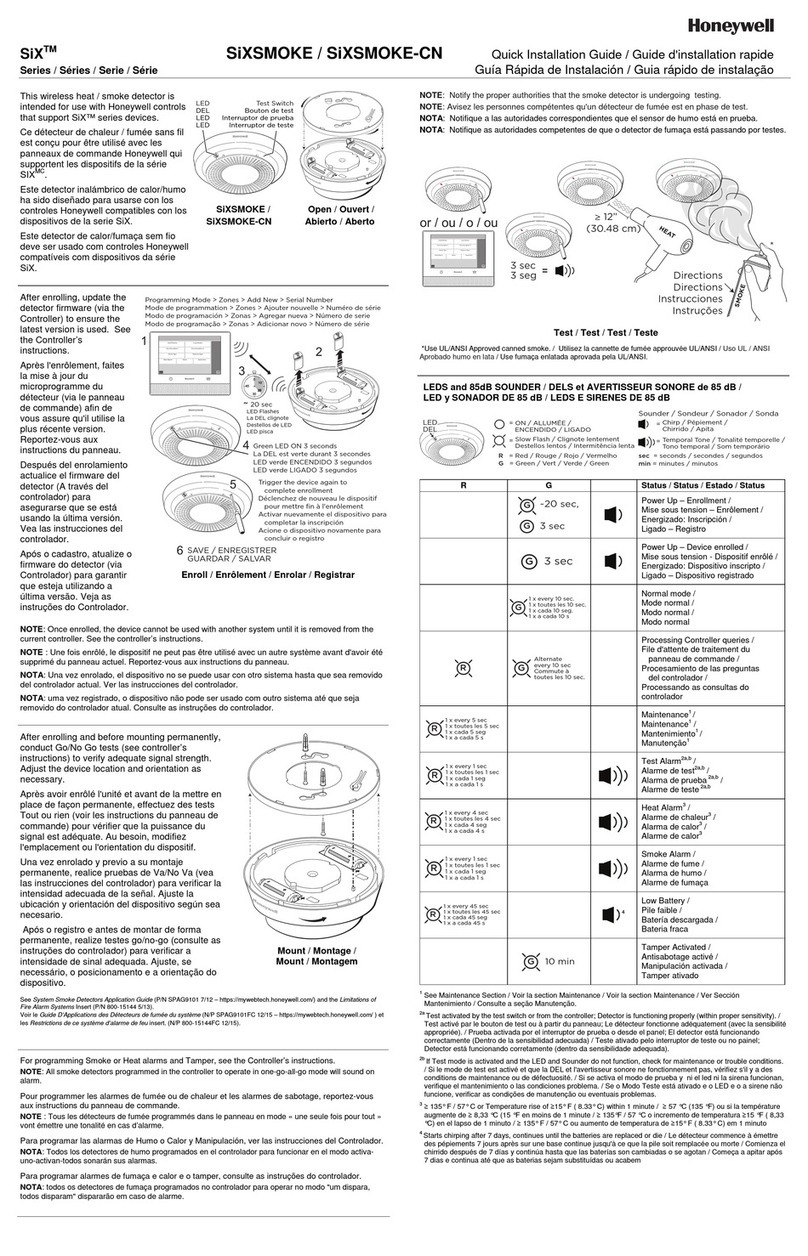
Honeywell
Honeywell SiX Series Quick installation guide
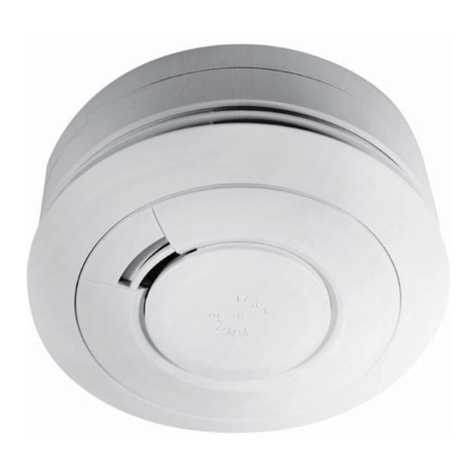
Ei Electronics
Ei Electronics Ei603 Series instructions
